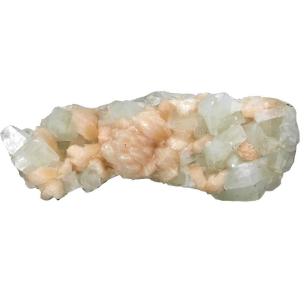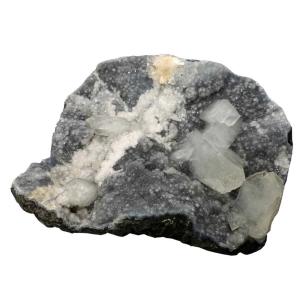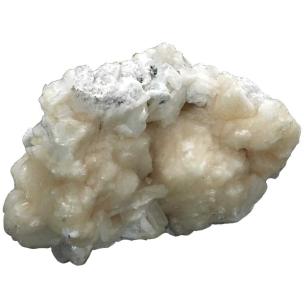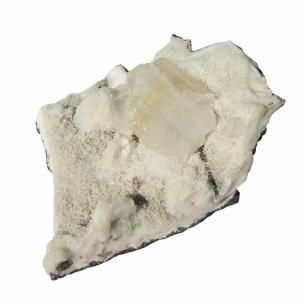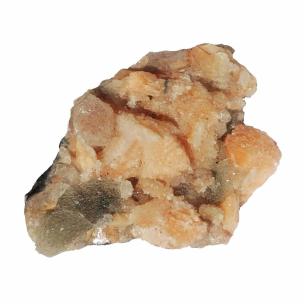- +91-965-4540-333
-
Cash on Delivery is Now Available.
- An ISO 9001-2015 Certified Company
- Home
- About Us
-
Crystals
-
Crystals By Names
- Beer Quartz
- Cherry Creek Jasper
- Chiastolite
- Crystal Actinolite
- Crystal Aegerine
- Crystal Agate
- Crystal Albite
- Crystal Alexandrite
- Crystal Amazonite
- Crystal Amber
- Crystal Amethyst
- Crystal Ametrine
- Crystal Ammonite
- Crystal Angel Aura Quartz
- Crystal Angel Phantom/Amphibole Quartz
- Crystal Angelite
- Crystal Anhydrite
- Crystal Apatite
- Crystal Apophyllite
- Crystal Aquamarine
- Crystal Aura Quartz
- Crystal Aventurine
- Crystal Axinite
- Crystal Azeztulite
- Crystal Azurite
- Crystal Banded Agate
- Crystal Beryl
- Crystal Beta Quartz
- Crystal Biotite
- Crystal Bismuth
- Crystal Black Agate
- Crystal Black Coral
- Crystal Black Dragon Vein Agate
- Crystal Black Labradorite
- Crystal Black Matte
- Crystal Black Obsidian
- Crystal Black Onyx
- Crystal Black Sardonyx
- Crystal Black Sulemani
- Crystal Black Tourmaline
- Crystal Black Vanadinite
- Crystal Bloodstone
- Crystal Blue Agate
- Crystal Blue Aragonite
- Crystal Blue Aventurine
- Crystal Blue Barite
- Crystal Blue Chalcedony
- Crystal Blue Goldstone
- Crystal Blue Howlite
- Crystal Blue Lace Agate
- Crystal Blue Onyx
- Crystal Blue Quartz
- Crystal Blue Sapphire
- Crystal Blue Sunstone
- Crystal Botswana Agate
- Crystal Brandenberg Quartz
- Crystal Brazilian Amethyst
- Crystal Brochantite
- Crystal Bronzite
- Crystal Brown Barite
- Crystal Brown Chalcedony
- Crystal Brown Jasper
- Crystal Cacoxenite
- Crystal Calcite
- Crystal Carborundum
- Crystal Carnelian
- Crystal Carrollite
- Crystal Cat's Eye
- Crystal Cathedral Quartz
- Crystal Cavansite
- Crystal Celestite
- Crystal Chalcedony
- Crystal Chalcopyrite
- Crystal Champagne Aura Quartz
- Crystal Charoite
- Crystal Chaurite
- Crystal Chlorite
- Crystal Christ Commune Aura
- Crystal Chrysanthemum Stone
- Crystal Chrysocolla
- Crystal Chrysophrase
- Crystal Chrysoprase
- Crystal Chrysotile
- Crystal Cinnabar
- Crystal Citrine
- Crystal Clear Quartz
- Crystal Clintonite
- Crystal Cobalt Calcite
- Crystal Conglomerate
- Crystal Copper
- Crystal Coral
- Crystal Coral Fossil
- Crystal Cornetite
- Crystal Covellite
- Crystal Cracked Quartz
- Crystal Crazy Lace Agate
- Crystal Dalmatian Jasper
- Crystal Dark Red Vanadinite
- Crystal Dendritic Agate
- Crystal Desert Rose
- Crystal Diopside
- Crystal Dioptase
- Crystal Dizi Agate
- Crystal Dolomite
- Crystal Druzy Agate
- Crystal Dumortierite
- Crystal Ealite
- Crystal Elbaite
- Crystal Elite Shungite
- Crystal Emerald
- Crystal Emperor
- Crystal Enhydro
- Crystal Epidote
- Crystal Euclase
- Crystal Eudialyte
- Crystal Evil Eye
- Crystal Faden Quartz Crystal
- Crystal Fancy Jasper
- Crystal Feldspar
- Crystal Fenster Quartz
- Crystal Fire Agate
- Crystal Flame Aura Quartz
- Crystal Flint
- Crystal Fluorite
- Crystal Fossils
- Crystal Galaxyite
- Crystal Galena
- Crystal Garnet
- Crystal Gaspeite
- Crystal Gaudefroyite
- Crystal Ghosonite
- Crystal Glass
- Crystal Goethite
- Crystal Golden Black Obsidian
- Crystal Golden Calcite
- Crystal Golden Rutile
- Crystal Golden Sheen Obsidian
- Crystal Golden Topaz
- Crystal Goldstone
- Crystal Gomti
- Crystal Gomti Chakra
- Crystal Granite Blue Fire
- Crystal Green Agate
- Crystal Green Amethyst
- Crystal Green Aventurine
- Crystal Green Chalecedony
- Crystal Green Copper
- Crystal Green Fluorite
- Crystal Green Jade
- Crystal Green Kynite Rough Stone
- Crystal Green Onyx
- Crystal Green Rutile
- Crystal Green Spot Jasper
- Crystal Green Tourmaline Quartz
- Crystal Grey Agate
- Crystal Grey Aventurine
- Crystal Grey Calcite
- Crystal Grey Iolite
- Crystal Grey Quartz
- Crystal Gypsum
- Crystal Hanksite
- Crystal Hausmannite
- Crystal Hawk's Eye
- Crystal Hematite
- Crystal Hemimorphite
- Crystal Hermiker
- Crystal Hessonite Garnet
- Crystal Heulandite
- Crystal Himalyan Quartz
- Crystal Honey Calcite
- Crystal Howlite
- Crystal Hubnerite
- Crystal Indian Jade
- Crystal Iolite
- Crystal Iris Agate
- Crystal Iron Pyrite
- Crystal Iron Tiger Eye
- Crystal Ivory Agate
- Crystal Jade
- Crystal Jasper
- Crystal K2 Rough
- Crystal Kambaba Jasper
- Crystal Kunzite
- Crystal Kyanite
- Crystal Labradorite
- Crystal Lapis Lazuli
- Crystal Larimar
- Crystal Larimer
- Crystal Lava
- Crystal Lavender Amethyst
- Crystal Lemon Quartz
- Crystal Lemurian Seed
- Crystal Leopard Jasper
- Crystal Lepidocrocite
- Crystal Lepidolite
- Crystal Libethenite
- Crystal Light Jade
- Crystal Lithium Quartz Crystal
- Crystal Magnesite
- Crystal Magnetite
- Crystal Mahagony Obsidian
- Crystal Malachite
- Crystal Marcasite
- Crystal Mariam
- Crystal Meteorite
- Crystal Mica
- Crystal Midnight Lace Obsidian
- Crystal Mimetite
- Crystal Moissanite
- Crystal Moldavite
- Crystal Mookaite
- Crystal Mookite Jasper
- Crystal Moonstone
- Crystal Morganite
- Crystal Moss agate
- Crystal Mozarkite
- Crystal Multi Picasso Jasper
- Crystal Muscovite
- Crystal Narmadeshwar
- Crystal Nirvana Quartz
- Crystal Nuummite
- Crystal Obsidian
- Crystal Ocean Jasper
- Crystal Onyx
- Crystal Opal
- Crystal Opalite
- Crystal Orange Calcite
- Crystal Orange Onyx
- Crystal Orange River Quartz
- Crystal Orgonite
- Crystal Orthoceras
- Crystal Parad
- Crystal Peach Calcite
- Crystal Peach Moonstone
- Crystal Pearl
- Crystal Peridot
- Crystal Petalite
- Crystal Petrified Jasper
- Crystal Petrified Wood
- Crystal Phantom Quartz
- Crystal Phrenite
- Crystal Picasso Jasper
- Crystal Picasso Stone
- Crystal Picture Jasper
- Crystal Pietersite
- Crystal Pink Argonite
- Crystal Pink Chalcedony
- Crystal Pink Nirvana Quartz
- Crystal Pink Opal
- Crystal Pink Optical Calcite
- Crystal Pink Tourmaline
- Crystal Prehnite
- Crystal Purple Fluorite
- Crystal Purpurite
- Crystal Pyrite
- Crystal Pyromorphite
- Crystal Quartz
- Crystal Rain Forest Jasper
- Crystal Rainbow Aura Quartz
- Crystal Rainbow Moonstone
- Crystal Red Aventurine
- Crystal Red Coral
- Crystal Red Hematite
- Crystal Red Jasper
- Crystal Red Leopard Skin Jasper
- Crystal Red Sunstone
- Crystal Rhodochrosite
- Crystal Rhodolite
- Crystal Rhodonite
- Crystal Rose Aura Quartz
- Crystal Rose Quartz
- Crystal Roselite
- Crystal Rubellite
- Crystal Ruby
- Crystal Ruby Fuschite
- Crystal Ruby Galaxy Granite
- Crystal Ruby Kyanite
- Crystal Ruby Matrix
- Crystal Ruby Zoisite
- Crystal Rutilated Quartz
- Crystal Sagenite Agate
- Crystal Sardonyx
- Crystal Scolecite
- Crystal Selenite
- Crystal Septerye
- Crystal Serpentine
- Crystal Shadow Quartz
- Crystal Shaman Quartz
- Crystal Shattuckite
- Crystal Shiva Lingam
- Crystal Shungite
- Crystal Sichuan Quartz
- Crystal Sipi
- Crystal Skutterndite
- Crystal Smithsonite
- Crystal Smoky Quartz
- Crystal Snakeskin Agate
- Crystal Snow Quartz
- Crystal Snowflake Obsidian
- Crystal Soapstone/Steatite
- Crystal Sodalite
- Crystal Solar Christ Aura
- Crystal Sphalerite
- Crystal Spinel
- Crystal Spirit Quartz
- Crystal Spot jasper
- Crystal Star Rose Quartz
- Crystal Stichtite
- Crystal Stilebite
- Crystal Succor Creek Jasper
- Crystal Sugilite
- Crystal Sulemani Akik
- Crystal Sulphur
- Crystal Sunset Feldspar
- Crystal Sunstone
- Crystal Super Seven
- Crystal Tangerine Quartz
- Crystal Tangerine Sun Aura
- Crystal Tanzanite
- Crystal Tanzine Aura
- Crystal Tektite
- Crystal Thunderegg
- Crystal Tibetan Black Spot Quartz
- Crystal Tiger Eye
- Crystal Topaz
- Crystal Tourmalinated Quartz
- Crystal Tourmaline
- Crystal Tree Agate
- Crystal Turquoise
- Crystal Ulexite
- Crystal Unakite
- Crystal Vanadinite
- Crystal Vanadite
- Crystal Vermarine/Green Quartz
- Crystal Vesuvianite
- Crystal Vogel Wands
- Crystal Watermelon Tourmaline
- Crystal Wavelite
- Crystal White Agate
- Crystal White Aragonite
- Crystal White Coral
- Crystal White Howlite
- Crystal White Moonstone
- Crystal White Opal
- Crystal White Topaz
- Crystal Wonderstone
- Crystal Wulfenite
- Crystal Yellow Agate
- Crystal Yellow Aventurine
- Crystal Yellow Calcite
- Crystal Yellow Carnelian
- Crystal Yellow Celestite
- Crystal yellow fluorite
- Crystal Yellow Jade
- Crystal Yellow Jasper
- Crystal Yellow Lace Agate
- Crystal Yellow Onyx
- Crystal Yellow Pink Aura Quartz
- Crystal Yellow Quartz
- Crystal Yellow Sapphire
- Crystal Yellow Topaz
- Crystal Zebra Agate
- Crystal Zeolite
- Crystal Zincite
- Crystal Zircon
- Crystal Zoisite
- Lodolite
- Satyaloka
- Crystals By Shapes
- Fashion & Jewelry
- Gemstones
-
Lingam Jaldhari Narmadeshwar
-
Rudraksha
-
Crystals By Names
- Services & Courses
- Avika Stores
- Crystal Uses
- Join With Us
-
Our Appearance
- Videos
- Blog
- Faq
- Contact Us
- Home
-
Crystals
-
Crystals by Names
- Beer Quartz
- Cherry Creek Jasper
- Chiastolite
- Crystal Actinolite
- Crystal Aegerine
- Crystal Agate
- Crystal Albite
- Crystal Alexandrite
- Crystal Amazonite
- Crystal Amber
- Crystal Amethyst
- Crystal Ametrine
- Crystal Ammonite
- Crystal Angel Aura Quartz
- Crystal Angel Phantom/Amphibole Quartz
- Crystal Angelite
- Crystal Anhydrite
- Crystal Apatite
- Crystal Apophyllite
- Crystal Aquamarine
- Crystal Aura Quartz
- Crystal Aventurine
- Crystal Axinite
- Crystal Azeztulite
- Crystal Azurite
- Crystal Banded Agate
- Crystal Beryl
- Crystal Beta Quartz
- Crystal Biotite
- Crystal Bismuth
- Crystal Black Agate
- Crystal Black Coral
- Crystal Black Dragon Vein Agate
- Crystal Black Labradorite
- Crystal Black Matte
- Crystal Black Obsidian
- Crystal Black Onyx
- Crystal Black Sardonyx
- Crystal Black Sulemani
- Crystal Black Tourmaline
- Crystal Black Vanadinite
- Crystal Bloodstone
- Crystal Blue Agate
- Crystal Blue Aragonite
- Crystal Blue Aventurine
- Crystal Blue Barite
- Crystal Blue Chalcedony
- Crystal Blue Goldstone
- Crystal Blue Howlite
- Crystal Blue Lace Agate
- Crystal Blue Onyx
- Crystal Blue Quartz
- Crystal Blue Sapphire
- Crystal Blue Sunstone
- Crystal Botswana Agate
- Crystal Brandenberg Quartz
- Crystal Brazilian Amethyst
- Crystal Brochantite
- Crystal Bronzite
- Crystal Brown Barite
- Crystal Brown Chalcedony
- Crystal Brown Jasper
- Crystal Cacoxenite
- Crystal Calcite
- Crystal Carborundum
- Crystal Carnelian
- Crystal Carrollite
- Crystal Cat's Eye
- Crystal Cathedral Quartz
- Crystal Cavansite
- Crystal Celestite
- Crystal Chalcedony
- Crystal Chalcopyrite
- Crystal Champagne Aura Quartz
- Crystal Charoite
- Crystal Chaurite
- Crystal Chlorite
- Crystal Christ Commune Aura
- Crystal Chrysanthemum Stone
- Crystal Chrysocolla
- Crystal Chrysophrase
- Crystal Chrysoprase
- Crystal Chrysotile
- Crystal Cinnabar
- Crystal Citrine
- Crystal Clear Quartz
- Crystal Clintonite
- Crystal Cobalt Calcite
- Crystal Conglomerate
- Crystal Copper
- Crystal Coral
- Crystal Coral Fossil
- Crystal Cornetite
- Crystal Covellite
- Crystal Cracked Quartz
- Crystal Crazy Lace Agate
- Crystal Dalmatian Jasper
- Crystal Dark Red Vanadinite
- Crystal Dendritic Agate
- Crystal Desert Rose
- Crystal Diopside
- Crystal Dioptase
- Crystal Dizi Agate
- Crystal Dolomite
- Crystal Druzy Agate
- Crystal Dumortierite
- Crystal Ealite
- Crystal Elbaite
- Crystal Elite Shungite
- Crystal Emerald
- Crystal Emperor
- Crystal Enhydro
- Crystal Epidote
- Crystal Euclase
- Crystal Eudialyte
- Crystal Evil Eye
- Crystal Faden Quartz Crystal
- Crystal Fancy Jasper
- Crystal Feldspar
- Crystal Fenster Quartz
- Crystal Fire Agate
- Crystal Flame Aura Quartz
- Crystal Flint
- Crystal Fluorite
- Crystal Fossils
- Crystal Galaxyite
- Crystal Galena
- Crystal Garnet
- Crystal Gaspeite
- Crystal Gaudefroyite
- Crystal Ghosonite
- Crystal Glass
- Crystal Goethite
- Crystal Golden Black Obsidian
- Crystal Golden Calcite
- Crystal Golden Rutile
- Crystal Golden Sheen Obsidian
- Crystal Golden Topaz
- Crystal Goldstone
- Crystal Gomti
- Crystal Gomti Chakra
- Crystal Granite Blue Fire
- Crystal Green Agate
- Crystal Green Amethyst
- Crystal Green Aventurine
- Crystal Green Chalecedony
- Crystal Green Copper
- Crystal Green Fluorite
- Crystal Green Jade
- Crystal Green Kynite Rough Stone
- Crystal Green Onyx
- Crystal Green Rutile
- Crystal Green Spot Jasper
- Crystal Green Tourmaline Quartz
- Crystal Grey Agate
- Crystal Grey Aventurine
- Crystal Grey Calcite
- Crystal Grey Iolite
- Crystal Grey Quartz
- Crystal Gypsum
- Crystal Hanksite
- Crystal Hausmannite
- Crystal Hawk's Eye
- Crystal Hematite
- Crystal Hemimorphite
- Crystal Hermiker
- Crystal Hessonite Garnet
- Crystal Heulandite
- Crystal Himalyan Quartz
- Crystal Honey Calcite
- Crystal Howlite
- Crystal Hubnerite
- Crystal Indian Jade
- Crystal Iolite
- Crystal Iris Agate
- Crystal Iron Pyrite
- Crystal Iron Tiger Eye
- Crystal Ivory Agate
- Crystal Jade
- Crystal Jasper
- Crystal K2 Rough
- Crystal Kambaba Jasper
- Crystal Kunzite
- Crystal Kyanite
- Crystal Labradorite
- Crystal Lapis Lazuli
- Crystal Larimar
- Crystal Larimer
- Crystal Lava
- Crystal Lavender Amethyst
- Crystal Lemon Quartz
- Crystal Lemurian Seed
- Crystal Leopard Jasper
- Crystal Lepidocrocite
- Crystal Lepidolite
- Crystal Libethenite
- Crystal Light Jade
- Crystal Lithium Quartz Crystal
- Crystal Magnesite
- Crystal Magnetite
- Crystal Mahagony Obsidian
- Crystal Malachite
- Crystal Marcasite
- Crystal Mariam
- Crystal Meteorite
- Crystal Mica
- Crystal Midnight Lace Obsidian
- Crystal Mimetite
- Crystal Moissanite
- Crystal Moldavite
- Crystal Mookaite
- Crystal Mookite Jasper
- Crystal Moonstone
- Crystal Morganite
- Crystal Moss agate
- Crystal Mozarkite
- Crystal Multi Picasso Jasper
- Crystal Muscovite
- Crystal Narmadeshwar
- Crystal Nirvana Quartz
- Crystal Nuummite
- Crystal Obsidian
- Crystal Ocean Jasper
- Crystal Onyx
- Crystal Opal
- Crystal Opalite
- Crystal Orange Calcite
- Crystal Orange Onyx
- Crystal Orange River Quartz
- Crystal Orgonite
- Crystal Orthoceras
- Crystal Parad
- Crystal Peach Calcite
- Crystal Peach Moonstone
- Crystal Pearl
- Crystal Peridot
- Crystal Petalite
- Crystal Petrified Jasper
- Crystal Petrified Wood
- Crystal Phantom Quartz
- Crystal Phrenite
- Crystal Picasso Jasper
- Crystal Picasso Stone
- Crystal Picture Jasper
- Crystal Pietersite
- Crystal Pink Argonite
- Crystal Pink Chalcedony
- Crystal Pink Nirvana Quartz
- Crystal Pink Opal
- Crystal Pink Optical Calcite
- Crystal Pink Tourmaline
- Crystal Prehnite
- Crystal Purple Fluorite
- Crystal Purpurite
- Crystal Pyrite
- Crystal Pyromorphite
- Crystal Quartz
- Crystal Rain Forest Jasper
- Crystal Rainbow Aura Quartz
- Crystal Rainbow Moonstone
- Crystal Red Aventurine
- Crystal Red Coral
- Crystal Red Hematite
- Crystal Red Jasper
- Crystal Red Leopard Skin Jasper
- Crystal Red Sunstone
- Crystal Rhodochrosite
- Crystal Rhodolite
- Crystal Rhodonite
- Crystal Rose Aura Quartz
- Crystal Rose Quartz
- Crystal Roselite
- Crystal Rubellite
- Crystal Ruby
- Crystal Ruby Fuschite
- Crystal Ruby Galaxy Granite
- Crystal Ruby Kyanite
- Crystal Ruby Matrix
- Crystal Ruby Zoisite
- Crystal Rutilated Quartz
- Crystal Sagenite Agate
- Crystal Sardonyx
- Crystal Scolecite
- Crystal Selenite
- Crystal Septerye
- Crystal Serpentine
- Crystal Shadow Quartz
- Crystal Shaman Quartz
- Crystal Shattuckite
- Crystal Shiva Lingam
- Crystal Shungite
- Crystal Sichuan Quartz
- Crystal Sipi
- Crystal Skutterndite
- Crystal Smithsonite
- Crystal Smoky Quartz
- Crystal Snakeskin Agate
- Crystal Snow Quartz
- Crystal Snowflake Obsidian
- Crystal Soapstone/Steatite
- Crystal Sodalite
- Crystal Solar Christ Aura
- Crystal Sphalerite
- Crystal Spinel
- Crystal Spirit Quartz
- Crystal Spot jasper
- Crystal Star Rose Quartz
- Crystal Stichtite
- Crystal Stilebite
- Crystal Succor Creek Jasper
- Crystal Sugilite
- Crystal Sulemani Akik
- Crystal Sulphur
- Crystal Sunset Feldspar
- Crystal Sunstone
- Crystal Super Seven
- Crystal Tangerine Quartz
- Crystal Tangerine Sun Aura
- Crystal Tanzanite
- Crystal Tanzine Aura
- Crystal Tektite
- Crystal Thunderegg
- Crystal Tibetan Black Spot Quartz
- Crystal Tiger Eye
- Crystal Topaz
- Crystal Tourmalinated Quartz
- Crystal Tourmaline
- Crystal Tree Agate
- Crystal Turquoise
- Crystal Ulexite
- Crystal Unakite
- Crystal Vanadinite
- Crystal Vanadite
- Crystal Vermarine/Green Quartz
- Crystal Vesuvianite
- Crystal Vogel Wands
- Crystal Watermelon Tourmaline
- Crystal Wavelite
- Crystal White Agate
- Crystal White Aragonite
- Crystal White Coral
- Crystal White Howlite
- Crystal White Moonstone
- Crystal White Opal
- Crystal White Topaz
- Crystal Wonderstone
- Crystal Wulfenite
- Crystal Yellow Agate
- Crystal Yellow Aventurine
- Crystal Yellow Calcite
- Crystal Yellow Carnelian
- Crystal Yellow Celestite
- Crystal yellow fluorite
- Crystal Yellow Jade
- Crystal Yellow Jasper
- Crystal Yellow Lace Agate
- Crystal Yellow Onyx
- Crystal Yellow Pink Aura Quartz
- Crystal Yellow Quartz
- Crystal Yellow Sapphire
- Crystal Yellow Topaz
- Crystal Zebra Agate
- Crystal Zeolite
- Crystal Zincite
- Crystal Zircon
- Crystal Zoisite
- Lodolite
- Satyaloka
- Crystals by Shapes
- Fashion & Jewelry
- Gemstones
-
Lingam jaldhari Narmadeshwar
-
Rudraksha
-
Crystals by Names
- Services & Courses
- Avika Stores
- Crystal Uses
- Join with Us
- Our Appearance









